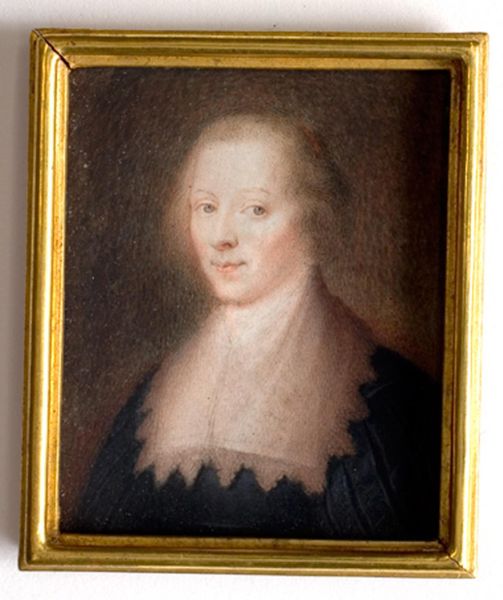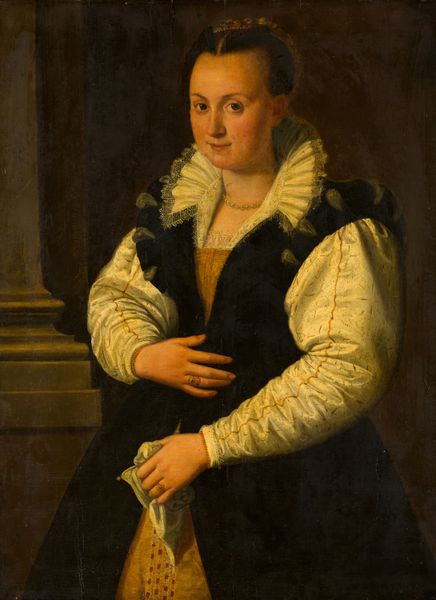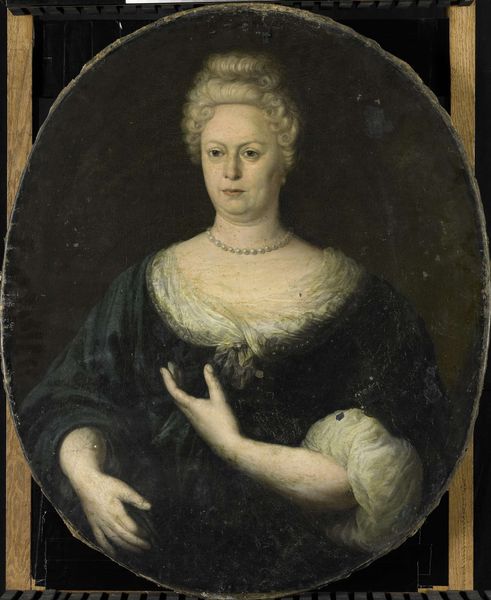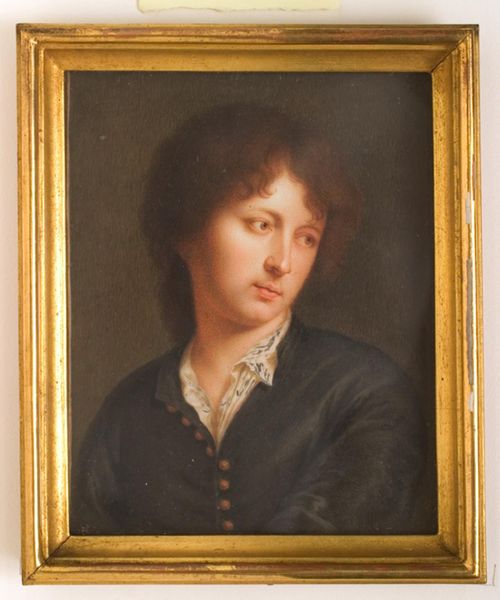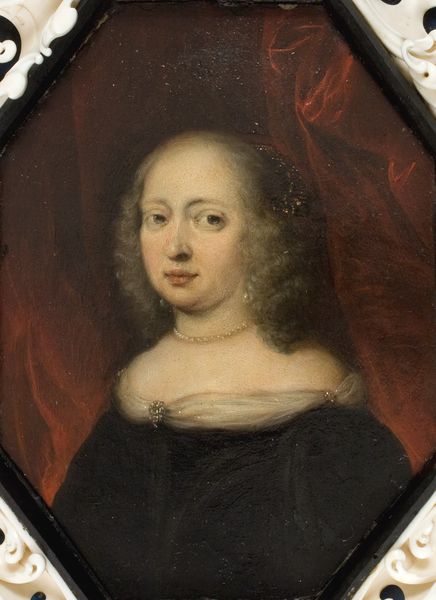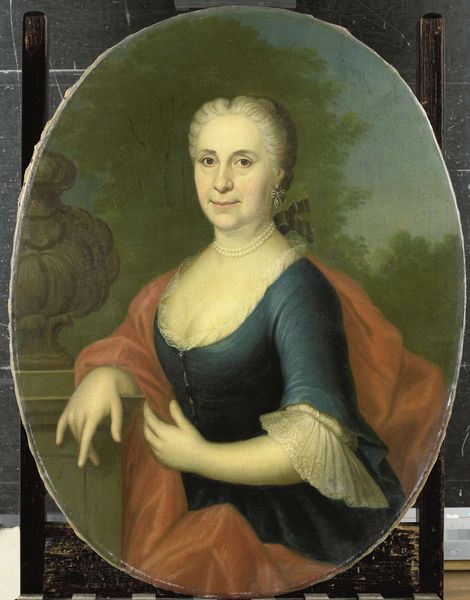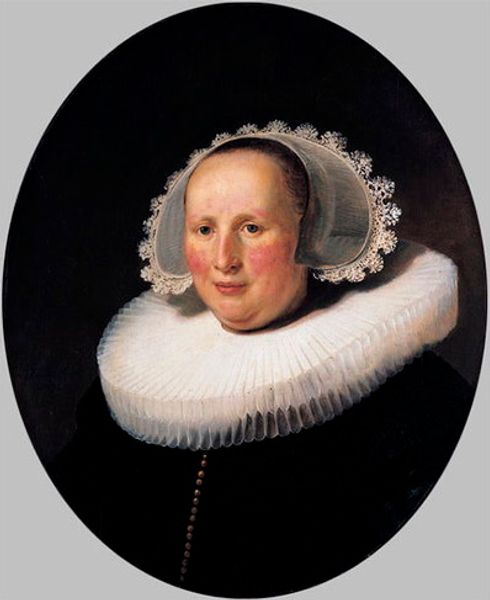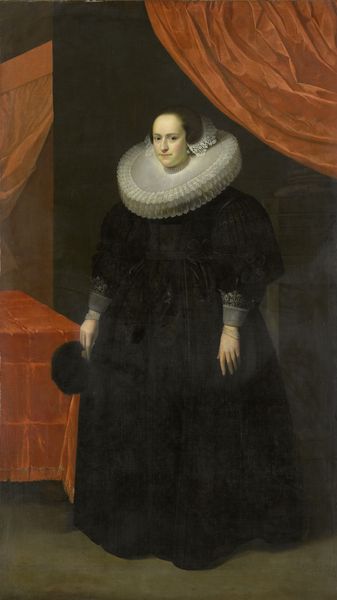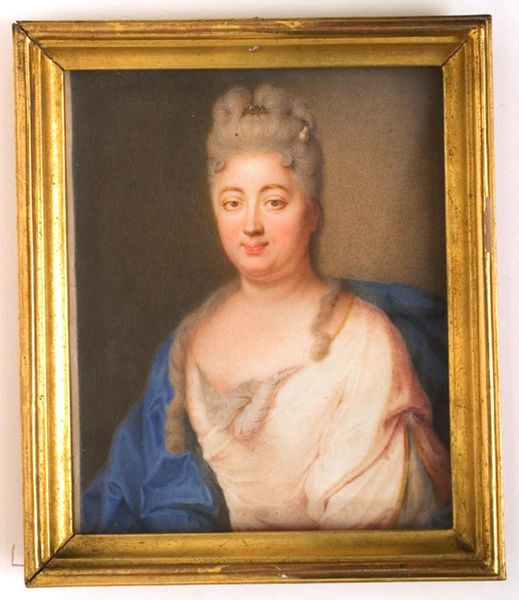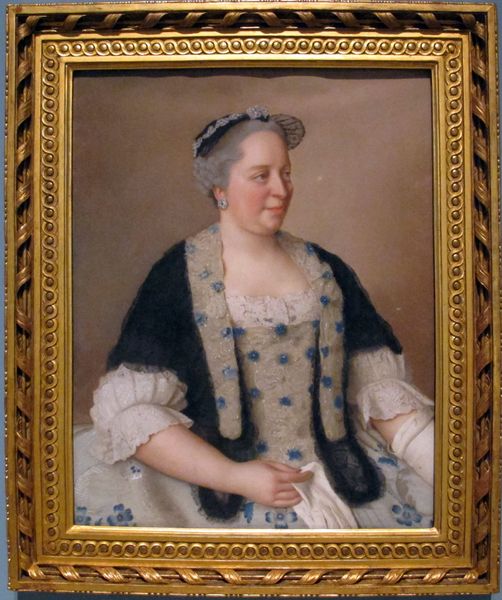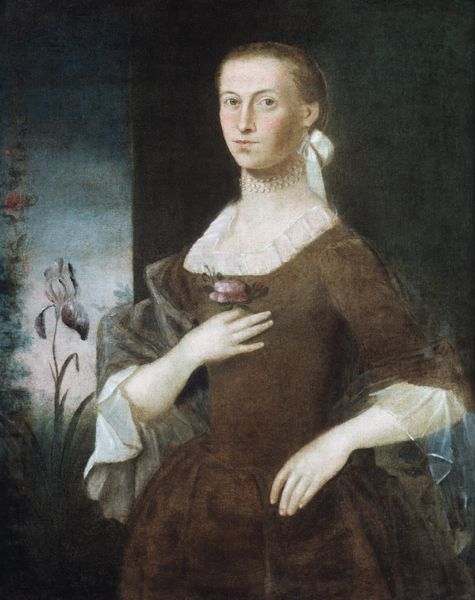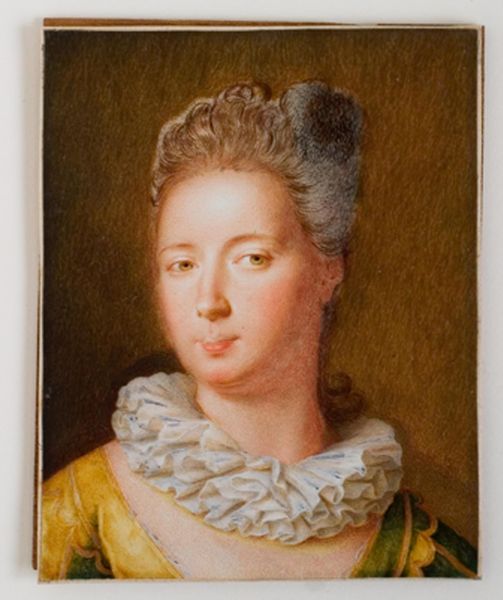
oil-paint
#
portrait
#
baroque
#
oil-paint
#
portrait reference
#
portrait head and shoulder
#
animal portrait
#
window to the soul
#
animal drawing portrait
#
portrait drawing
#
genre-painting
#
facial portrait
#
academic-art
#
portrait art
#
fine art portrait
#
celebrity portrait
Dimensions: 11.6 cm (height) x 9 cm (width) (Netto)
Editor: This is *Dameportræt*, a portrait by David Gardelle, made sometime between 1726 and 1748 using oil paint. It feels very intimate, somehow – the muted palette and the sitter's direct gaze make me wonder about her daily life. What stands out to you when you look at this piece? Curator: I'm drawn to how the materials themselves speak volumes. Consider the oil paint – its cost and availability at the time immediately tell us about access and privilege. Who was commissioning such works and who had the means to create them? The artist’s labor is right there in the brushstrokes, evident in the textures. How much time did Gardelle spend mixing pigments? Where did they source them from? The answers to these questions reveal social and economic relationships inherent in artmaking during the Baroque period. Editor: That’s fascinating. I hadn't thought about the pigments as indicators of status, but that makes so much sense! It also changes the way I see the woman being portrayed. Does that imply she held some influence? Curator: Precisely. Her ability to commission and own this painting speaks to that, while her clothing, jewelry and demeanor may also reflect the materials and production within particular sumptuary laws and social codes of that period. Are there specific elements within those materials that suggest more localized and situated relations? Think of where lace production was happening then or even what particular social circles might have been coded by certain styles and material finishes in jewelry. It forces us to look at these portraits not just as images but also as records of consumption, labor, and trade. Editor: Wow, I’ll never look at a portrait the same way again! Seeing it as an object embedded in its own material culture gives it so much more depth. Thank you. Curator: My pleasure! Focusing on materials is a fantastic way to reveal histories that are otherwise overlooked.
Comments
No comments
Be the first to comment and join the conversation on the ultimate creative platform.
